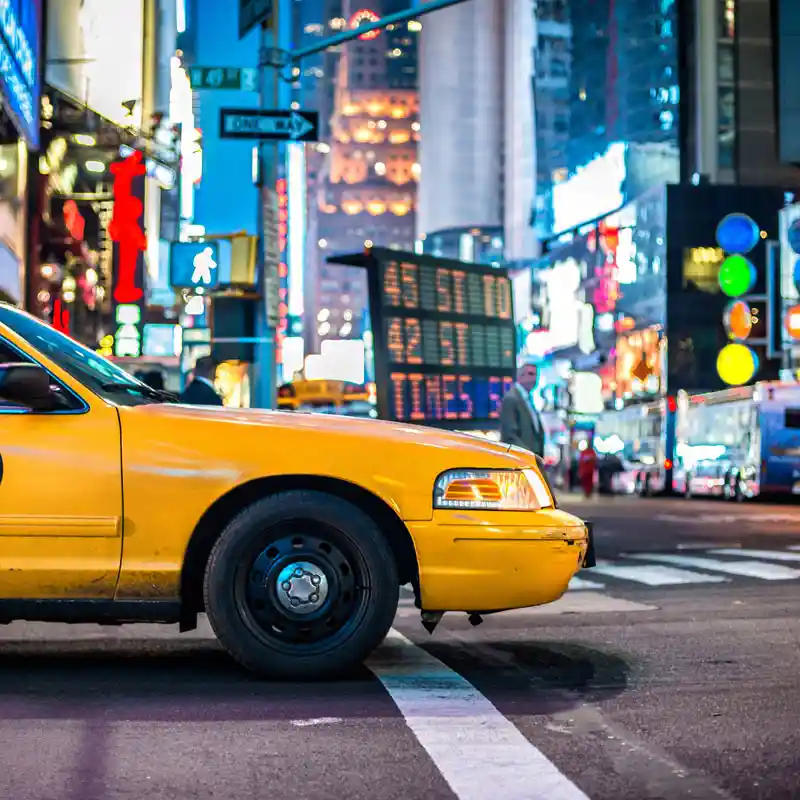U.S. Tourist Visa Health Insurance
A tourism and visit visa, also known as a B-2 visa, is a United States visitor visa for nonimmigrants wishing to enter the U.S. for tourism or leisure purposes. This B-2 visa does not apply to individuals entering the U.S. for work, study, paid performances, or permanent residence.
WHAT IS THE DIFFERENCE BETWEEN A B-1 AND B-2 VISA? B-1 and B-2 visas are both classified as nonimmigrant visitor visas for non-U.S. citizens who wish to enter the U.S. temporarily. However, the B-1 visa applies to individuals entering the country for business purposes (i.e. to consult with associates or attend a conference) while the B-2 visa applies to tourist or recreational visits.
Who Needs a U.S. Tourist Visa?
Individuals traveling to the United States for the following reasons will need to apply for a B-2 “tourism and visit” visa:
- Tourism
- Holiday or vacation
- Visit with friends or family
- Musical, sporting event, social event, or contest (B-2 visa only applies to participants in these events if they are not being paid for their participation)
- Enrollment in a course of study which does not count for credit toward a degree (e.g. week-long yoga class)

Are There Any Tourist Visa Exceptions?
Yes – the U.S. Department of State notes that citizens of Canada and Bermuda do not typically need a visa for tourism and visits.
You can also bypass the visa process if you qualify for the Visa Waiver Program (VWP). This program allows non-U.S. citizens who meet specific requirements to travel to the U.S. for approved business or tourism purposes – without first obtaining a visa.
The Visa Waiver program is only available to individuals of an approved VWP country who are traveling for 90 days or less and have authorization under the Electronic System for Travel Authorization (ESTA).
To learn more about eligibility and enrollment, visit our “Understanding the U.S. Visa Waiver Program” page.
How Do I Apply for a Tourist Visa?
Before you apply for your visa, it’s important to understand that the application steps may vary slightly by U.S. Embassy or Consulate. To see specific instructions for the U.S. Embassy or Consulate nearest to you, visit USEmbassy.gov and find the country in which you will apply.
For a general overview of the tourist visa application process, note the following steps:
1. Complete the Online Nonimmigrant Visa Application, Form DS-160
The Form DS-160 will require you to upload a recent color photo that meets the photograph requirements found here. Once you have filled out and submitted your form, you’ll need to print the confirmation page to bring with you to your visa interview.
2. Schedule an Appointment for Your Visa Interview
This is the interview you will complete with a U.S. consular officer to determine whether or not you meet visitor visa requirements and which visitor visa you need. While you may schedule your interview at any U.S. Embassy or Consulate, it is recommended that you schedule it in the country in which you live – it may be more difficult to obtain a visa outside of your country of residence. To find the nearest embassy or consulate and its contact information, search for your country of residence at USEmbassy.gov.
IS A VISA INTERVIEW REQUIRED OF ALL U.S. VISITORS? In general, visa interviews are required of all travelers between the ages of 14-79. Interviews are not typically required of applicants 13 years and younger or 80 years and older—though consular officers reserve the right to require an interview of any visa applicant, regardless of age.
3. Check the Typical Wait Time for Your Country
Understand that wait times vary by location, visa category, and even season, which is why you should apply early. You can check the wait time for your embassy or consulate under "Appointment Wait Time" at travel.state.gov.
4. Pay the Non-Refundable Visa Application Fee
This is a $160 fee that may be required before your interview. Citizens or residents of certain countries will be required to pay an additional visa issuance fee (upon visa approval). To determine whether you’ll owe an issuance fee, select your nationality under “Prepare for Your Interview” at the state.gov “Visitor Visa” page.
5. Gather the Required Documents
Prior to your visitor visa interview, ensure you have the following:
- Passport that is valid for 6 months after your planned departure from the United States
- Nonimmigrant visa application Form DS-160 confirmation page
- Application fee payment receipt (if payment is required prior to interview)
- One printed photo that complies with visitor visa photo requirements (in case your photo fails to upload to the online Form-DS-160)
Note that the U.S. Embassy or Consulate may request additional documentation which serves as evidence of the following:
- The purpose of your trip: Evidence could include your itinerary, travel plans, or proof of family ties in the United States.
- Your intentions to leave the U.S. when your visa expires: You could provide evidence of a job back home, friends or family, or ties to a church or social club in your home country.
- Your financial means which allow you to travel to the USA: Evidence could include bank statements, credit cards, or pay slips. A tourist visa health insurance policy could help demonstrate your ability to pay for medical expenses by showing that you have coverage for unexpected injury or illness.
6. Attend Your Visa Interview
See tourist visa interview practice questions and interview tips.
What Is U.S. Tourist Visa Health Insurance?
Tourist visa health insurance is travel medical insurance that provides international coverage to those traveling to the United States from abroad. It typically offers coverage for the treatment of unexpected injuries and illnesses, emergency medical evacuation, emergency travel, accidental death, and some travel mishaps (like the airline losing your checked luggage).

Why Do I Need U.S. Tourist Visa Health Insurance?
Though undeniably exciting, international travel can still pose a risk. Here are 3 reasons to consider health insurance for your tourist visa:
1. There’s always a chance you could encounter a travel mishap, accident, or illness that calls for tourist visa insurance. After all, you’ll be navigating a foreign country while likely trying new foods, dealing with the effects of jet lag, and exposing yourself to foreign bacteria.
2. Your domestic health policy may not cover you in the United States. Even if it does, it may provide limited coverage. In the U.S., people are responsible for their own healthcare costs, meaning you’ll be financially responsible for any medical expenses that result from an unexpected illness or injury.
3. According to healthcare.gov, a broken leg can cost up to $7,500 to fix in the U.S., and the average cost of a 3-day hospital stay is around $30,000. Tourist visa health insurance, as noted by the Centers for Disease Control and Prevention (CDC), can reduce “the cost of a medical emergency" and the resulting “financial burden on travelers" by providing access to quality care and financial help if the unexpected occurs as you travel the country.
4. You may be asked to show proof of your ability to pay return travel, lodging, and medical costs. A tourist visa health policy like Atlas America could help demonstrate your ability to pay for medical expenses by showing that you have coverage for unexpected injury or illness. When you purchase Atlas America insurance, you’ll be given access to a visa letter which can serve as proof of work visa health insurance.
What Does U.S. Tourist Visa Health Insurance Cover?
In the face of a medical or travel emergency in the United States, a tourist visa health plan like Atlas America can provide access to a wide network of doctors and hospitals, emergency assistance, and a number of vital benefits.
Here Are a Few Highlights of Atlas America Insurance:
- 100% coverage for eligible medical expenses – after the deductible and up to the overall maximum limit – for injuries and illness incurred inside the U.S.
- Emergency Medical Evacuation
- Trip Interruption, Travel Delay, and Lost Checked Luggage coverage
- Multilingual emergency assistance available 365 days a year
Atlas America Offers Several Different Policies to International Visitors:
- Atlas Travel: Flexible and generally budget-friendly, this balanced plan offers high coverage limits for single international trips.
- Atlas Premium: This plan provides even higher coverage limits for a number of important benefits.
- Atlas Group: This plan provides the same coverage as Atlas Travel – at a 10% reduced rate for groups or families of 5 or more!
Atlas America policies are available to individuals 14 days or older who are traveling to the U.S. from abroad and looking for coverage of up to one year.
Why Choose Atlas America Insurance?
When you purchase an Atlas policy from WorldTrips, you can expect:
- Flexibility: Policies allow you to select the deductible, length of coverage, and coverage maximum that best align with your travel needs.
- Ease-of-Use: Online fulfillment is available immediately and no health screenings are required for acceptance. Plus, our wide provider network covers the majority of the United States, making it easy to find quality doctors and treatment.
- Assistance: Policies come with access to a full line of travel assistance services, available in multiple languages 365 days a year.
“WorldTrips is the best travel insurance company of 2024, based on our in-depth analysis of travel insurance policies."
As Seen in





KHE2FFFYH6SP-152-390
WorldTrips international travel medical insurance products are underwritten by Lloyd's. WorldTrips is a service company and a member of the Tokio Marine HCC group of companies. WorldTrips has authority to enter into contracts of insurance on behalf of the Lloyd's underwriting members of Lloyd's Syndicate 4141, which is managed by HCC Underwriting Agency, Ltd.